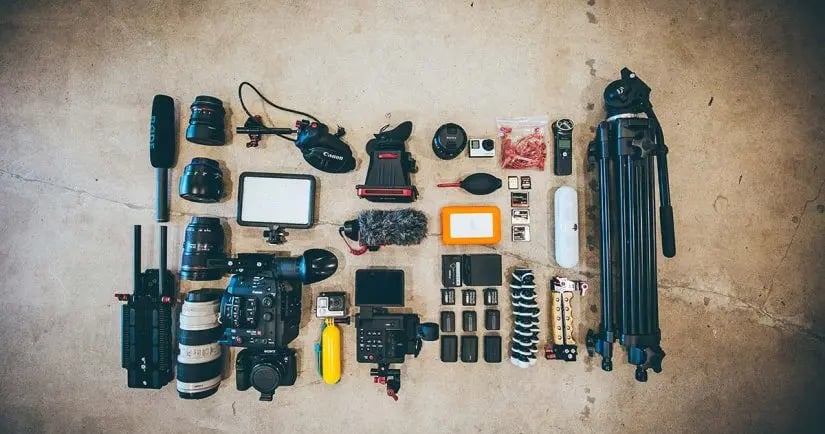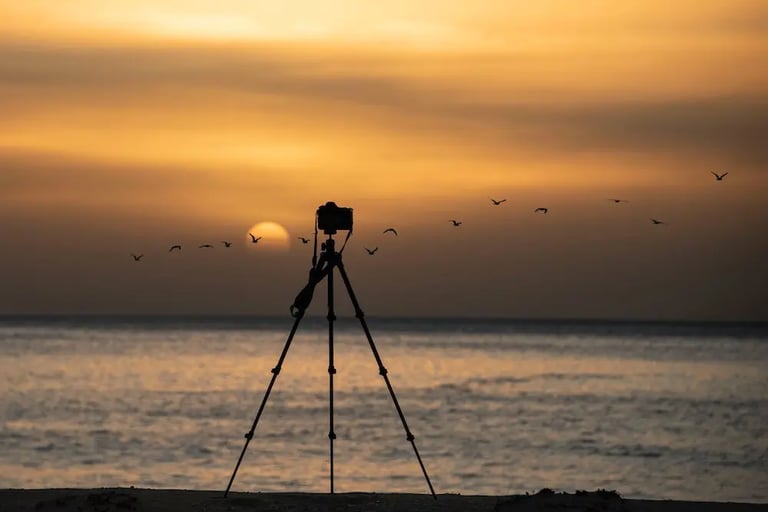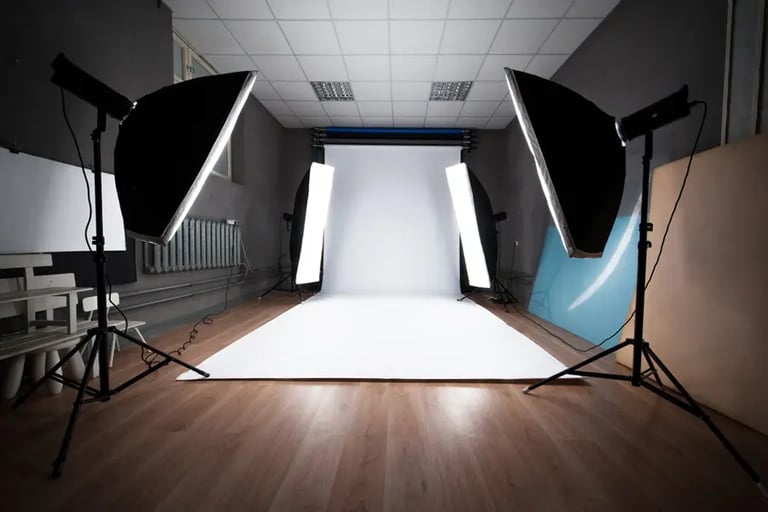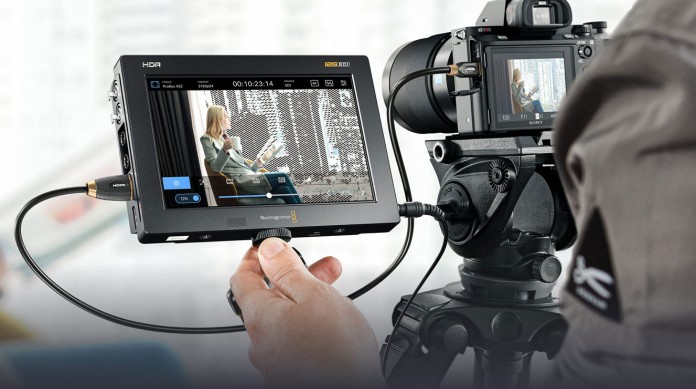10 Photography & Videography Accessories That Instantly Improve Your Shots
Whether you’re a beginner picking up your first camera or a seasoned creator looking to refine your craft, the truth is this: great gear doesn’t stop at the camera body. The right accessories can elevate your photos and videos from “pretty good” to “professional.” In this guide, we’ll explore ten essential accessories that instantly improve your shots. Each one solves a common problem photographers and videographers face, from shaky footage to poor lighting and so on.
10/10/20256 min read


When it comes to photo and video accessories to achieve better shots, the amount of different accessories and options for those accessories out there is staggering and can become overwhelming to find exactly what you need at a reasonable price point. Cameras and lenses are already expensive enough, so most aren't eager to shell out even more for accessories. However, they also want something that will last them and actually work as intended. Below are 10 accessories, we believe are the most practical and useful for getting professional shots, and we also outline 3 different price points for each for whether you are just starting out and looking for more budget options or you are more experienced and have the cash to afford more pro level options.
1. Tripod: The Foundation of Stability
Why it matters: A tripod eliminates camera shake, allowing for sharper photos, long exposures, and steady video. For photographers, it is perfect for landscapes, portraits or any shots that require long stillness. For videographers, it is essential for interviews, static shots, time-lapses etc. The tripod is one of the most essential accessories for anyone with a camera. If nothing else, a tripod is most recommended to procure.
Budget: Amazon Basics Lightweight Tripod
Pros & Cons:
Budget: Lightweight, affordable, but less stable in wind.
Pro: Rock-solid, carbon fiber, lasts years, but pricey and heavier.


2. External Microphone: Because Audio Matters
Why it matters: Viewers will forgive shaky footage, but they won’t forgive bad audio. Built-in camera mics are often tinny and pick up background noise. Not all, but most cameras are not generally designed for great audio. That is why external audio is important to prioritize if you are taking video. USB mics work well for simple voiceovers if you don't need anything too fancy. Shotguns mic (like the Rode VideoMic) are awesome for vlogging, and lavalier mics are perfect for interviews. While there are many different mics to fit your needs, having some sort of mic is better than leaving the audio up to the chance of internal camera mics.
Budget: BOYA BY-M1S Lavalier Mic
Mid-range: Rode VideoMic GO II
Pro: Sennheiser MKE 600 (Mic)
Sennheiser MKE 600 (Kit)
Pros & Cons:
Budget: Great starter, but audio can be thin and has limitations in sound quality
Pro: Broadcast-quality sound, durable, but higher cost. Sometimes more expensive than it needs to be.


3. Lighting Kit: Control the Mood
Why it matters: Light is photography’s raw material. Even the best camera struggles in poor lighting. While not all, many shots will require more lighting than natural lighting can provide. A shot with good lighting will look so much better and much more professional than shots that are lacking in lighting. Ring lights are great for portraits or still shot videos, softbox kts are great for controlling the lighting in the room through creating flattering, diffused light, and portable LED panels are versatile for traveling and run-and-go style shooting.
Budget: Neewer Ring Light Kit
Mid-range: Godox SL-60W Softbox Kit
Pro: Aputure 120D Mark II
Pros & Cons:
Budget: Portable, cheap, but limited power.
Pro: Professional-grade, cinematic lighting but requires investment. Not as portable either.
4. ND Filters: Master Exposure Outdoors
Why it matters: Neutral Density (ND) filters act like sunglasses for your lens, letting you shoot at wide apertures or slower shutter speeds in bright conditions. They are a great tool when the natural lighting isn't always working with you. For photographers, it allows you to capture motion blur or silky waterfalls while maintaining good exposure, and for videographers, it allows you to keep cinematic shutter speeds while in bright daylight conditions.
Budget: K&F Concept ND Filter
Mid-range: Tiffen Variable ND Filter
Pros & Cons:
Budget: Affordable, but may cause unintended color shifts.
Pro: Superior glass, consistent results but costs significantly more.
5. Gimbal Stabilizer: Smooth Cinematic Motion
Why it matters: A gimbal keeps your camera steady while moving, creating smooth footage. Nobody likes shaky shots or blurry photos, so a stabilizer can help minimize that. I personally don't go anywhere without my gimbal since I don't have steady hands. They are great for dynamic tracking shots, walk-and-talk shots without any bounce
Budget: DJI Osmo Mobile Se (Phone)
DJI RS 3 Mini (Camera)
Mid-range: DJI Ronin-SC 4
Pro: DJI RS 4 Pro
Pros & Cons:
Budget: Great for phones or smaller cameras, but limited weight.
Pro: Handles heavy rigs, pro features, but heavier and pricier. Sometimes the cheaper end of the gimbals can perform just as well as more expensive models.
6.Extra Batteries & Memory Cards: Never Miss a Shot
Why it matters: While this is less so a necessity for shooting, running out of power or storage mid-shoot is every creator’s nightmare, so it is always a great idea to be prepared with extra batteries and more memory on hand just in case. Carrying 1-2 extra batteries for your equipment and keeping a high speed SD on hand can ensure you never lose or miss out on shots.
Batteries: While there are some universal batteries for cameras or equipment, it is recommended to buy the battery associated with the brand for most optimal charging and compatibility. If you are using a third-party battery, it is necessary to check compatibility so you don't cause problems with your camera charging such as short circuiting.
Memory: SanDisk Extreme Pro 256GB SDXC
7. Camera Bag: Protect and Organize Your Gear
Why it matters: A good bag keeps your gear safe, accessible, and comfortable to carry. Backpacks are great for traveling and long shoots, and messenger bags are better for street photography if you don't want to carry too much around. It is always a good idea to invest in some hard cases for professional video rigs too. Not only do camera bags allow you to store and carry more equipment with you, but it also keep it safe from damage.
Budget: Amazon Basics DSLR Backpack
Mid-range: Lowepro ProTactic BP 350 AW II
Pros & Cons:
Budget: Gets the job done, but less padding.
Pro: Rugged, modular, weatherproof but bulkier and often too many components for average person
8. Remote Shutter Release: Hands-Free Precision
Why it matters: Prevents camera shake during long exposures, self-portraits, or group shots. While many photographers may never need a remote shutter release, for some it can be a game change. Wired remotes are cheap and reliable, while wireless remotes add more convenience. There are many uses for these, and you never know when one of them will come in handy. Even the wired remote shutter releases can be camera specific, so it is a good idea to check compatibility for choosing one.
Budget: Kiwifotos MC-DC2 Remote Switch
Mid-range: Pixel TW-283 Wireless Remote Shutter
Pros & Cons:
Budget: Cheap and reliable, but wired.
Pro: Wireless, app control, advanced features, overly complex sometimes
9. External Monitor: See More, Shoot Better
Why it matters: Small camera screens make it hard to judge focus and composition. An external monitor gives you a bigger, brighter view. It can be essential for framing and focus pulling if you are a videographer, and it can help with studio work for photographers. An external monitor ensures you are capturing exactly what you want to without any of the headache of seeing you messed up your shots in post.
Budget: Feelworld FW568
Mid-range: Atomos Shinobi
Pros & Cons:
Budget: Affordable, but less bright outdoors.
Pro: High resolution, color-accurate but significantly pricier.
10. Lens Cleaning Kit: Keep Your Optics Crystal Clear
Why it matters: Dust, smudges, and fingerprints can ruin an otherwise perfect shot. A lens cleaning kit is a simple but essential tool for maintaining image quality and protecting your gear. It is always a safe bet to keep a small lens cleaning kit with your camera gear just in case you may need. The other option is to have a dirty lens way out in the field where you have nothing to clean it with, without potential damage.
Pro: Visible Dust EZ Sensor Cleaning Kit
Pros & Cons:
Budget: Free software exists, but limited features.
Pro: Adobe suite + SSDs = industry standard — but subscription and hardware costs add up.
Final Thoughts
We feel as though these 10 accessories are most important keeping on hand when you are shooting. However, that doesn't mean other accessories we did not include aren't important, such as a camera strap. These accessories can really help elevate your skills and help you take fantastic shots. The trade-off between budget and pro gear is simple: affordability vs. reliability and performance. Budget gear is perfect for beginners or casual creators, while pro gear is built to last and deliver consistent results under demanding conditions. It really depends on your price range and needs.






Learn
Explore tips and techniques for photography.
Affiliate Disclosure
Some of these post/pages contain affiliate links. As an Amazon Associate and other retailers such as B&H Photo and Video I may earn from qualifying purchases. I only recommend gear and resources that I personally use, have tested, or truly believe in. Any support you give by purchasing through these links helps allows me to continue creating free content. Thank you!
Connect
Support
contact@brightformfocus.com
© 2025. All rights reserved.
